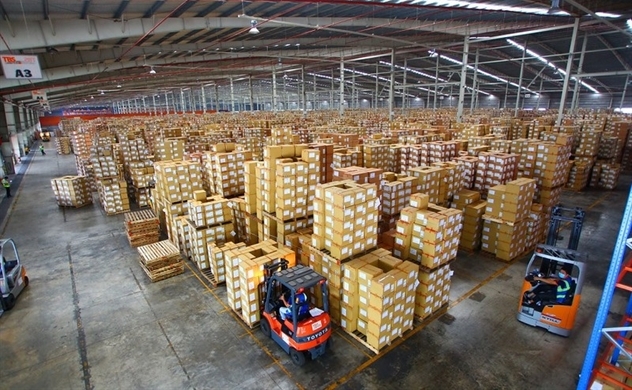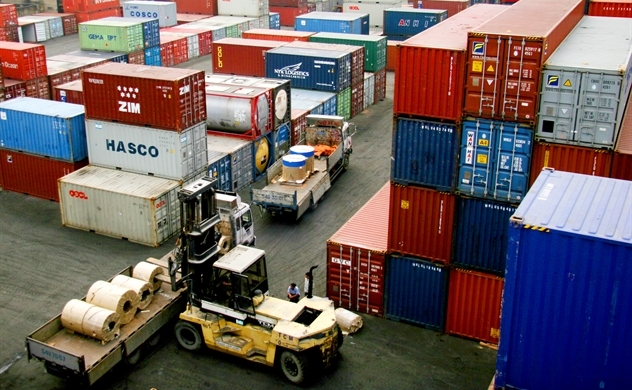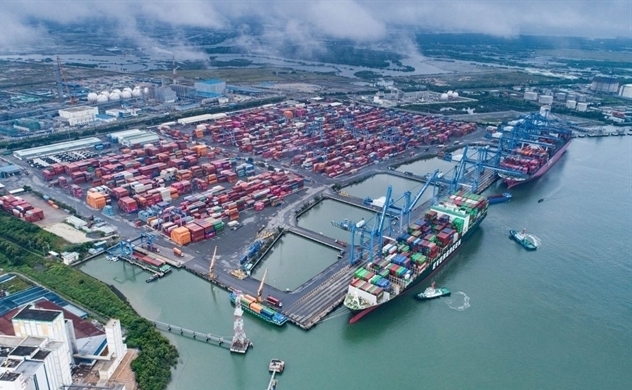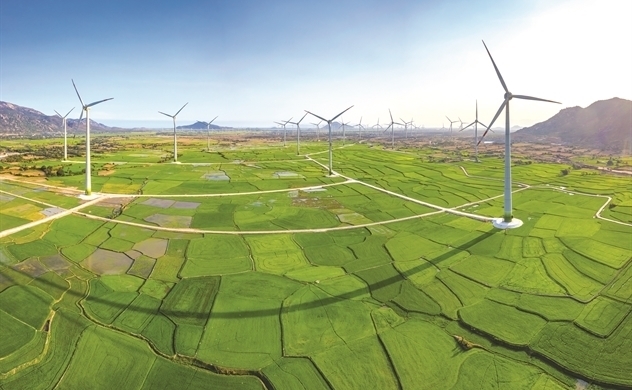Targeted growth may be out of reach but stay positive

Lingering difficulties may make it difficult to reach desired economic growth which is however positive. Photo by NDO.
Speaking at the closing ceremony of the 13th Party Central Committee’s eighth plenum on October 8, Party General Secretary Nguyen Phu Trong stated that it is forecasted that in this year, Vietnam’s GDP growth will “reach a rate of more than 5%, and though this will be lower than the set target of about 6.5%, it is still a relatively high level as compared to many nations in the region and the wider world.”
“A greater priority is to boost growth and improve growth quality, generate employment, and increase incomes for labourers based macroeconomic stability and ensuring all major balances of the economy, and ensuring social security,” Party General Secretary Trong stressed.
According to the Asian Development Bank (ADB), the Vietnamese economy will continue seeing big risks until the year’s end and even beyond.
“The nine-month economic growth remains relatively low due to slow-paced economic growth in China and many key markets of Vietnam, affecting Vietnam’s industrial production and exports,” said Shantanu Chakraborty, country director for Vietnam of the ADB. “This would mean it is very hard for Vietnam to reach its desired economic growth goal of 6-6.5% in 2023.”
Vietnam’s economic growth is expected to slow down to 5.8% in 2023 and 6% in 2024, compared to the ADB’s April forecast of 6.5 and 6.8 respectively, mainly due to feeble external demand, according to the ADB’s Asian Development Outlook (ADO) September 2023 on Vietnam’s economic performance launched more than a week ago.
The report also highlighted significant risks to the outlook. Internally, slow disbursements of public investment and structural weaknesses in the real economy are the main downside risks to the economy.
Externally, a substantial slowdown in global growth and weak recovery in China remain risks to the economic outlook. Sustained high interest rates in the US and Europe and a stronger US dollar may lead to further challenges to the recovery of external demand, and weaknesses in the dong exchange rate.
Vietnam’s economy ascended 4.24% year-on-year in the first nine months of this year. In which, the agro-forestry-fishery sector increased 4.43%, while the year-on-year rates of the industry and construction sector and the service sector stood at 2.41 and 6.32%, respectively.
Under the Ministry of Planning and Investment’s (MPI) freshly-updated economic growth scenarios reported last week to the government. Under the No.1 scenario, also the worst one, the whole-year growth rate will be about 5%, meaning an year-on-year 7% growth for Q4 is needed. Under the No2. Scenario, which is the medium one, the entire-year growth will be about 5.5%, meaning a year-on-year growth of 8.8% for Q4. Meanwhile under the No3 scenario, also the optimistic one, the economy will grow 6% this year, meaning the rate for Q4 must be 10.6% – a challenging target as the rate for Q3 is only 5.33%.
“Meanwhile, big difficulties remain, and it would be very challenging to reach these targets, which needs greater efforts from all sectors in the economy,” said MPI Minister Nguyen Chi Dung.
In the first nine months of the year, the added value of the industrial sector increased only 1.65% year-on-year, in which that of the manufacturing and processing sector expanded merely 1.98%.
According to the International Monetary Fund, though the economy is gradually recovering, such a nine-month growth rate would mean it is very hard for the government to reach its set economic growth goal.
“Economic growth is projected to bounce back in the second half of the year. After a weak first half, growth in 2023 is expected to accelerate and reach 4.7% for the whole year - supported by a rebound in exports and expansionary (especially fiscal) policies,” said the IMF’s Executive Board last week after it had concluded a policy consultation with Vietnam.
However, the board also underlined that this 4.7% growth level may be achieved assuming that the real estate turbulence is contained, and exports and credit growth pick up gradually in the second semester and in 2024.
The board has also offered some analysis and policy recommendations for Vietnam.
More than a week ago, the MPI reported to the government that in the first nine months, about 75,800 businesses halted operations – up 21.2% as compared to the corresponding period last year; 46,100 enterprises stopped operations and waited for dissolution procedures – up 26.9%; and 13,200 enterprises completed such procedures. On average, about 15,000 businesses were kicked off from the market every month.
According to the World Bank, a challenging external environment and weaker domestic demand is leading to a slowdown in economic growth in Vietnam, with an increase in the number of enterprises kicked out of the market. However, tut the economy will pick up pace over the second half of this year, and the following years.
The World Bank last week stated that Vietnam’s economic growth may see a moderate growth of 4.7% in 2023 due to weakening domestic and overseas demands, before gradually accelerating to 5.5% in 2024 and 6% in 2025. A proactive fiscal policy supporting short-term demand, removing barriers to the implementation of public investment, and addressing infrastructure constraints can help the economy achieve these targets and promote long-term growth.
“Vietnam’s economy is being tested by internal and external factors. To boost economic growth, the government can support aggregate demand through effective public investments, thereby creating jobs, and stimulating economic activity,” said Carolyn Turk, World Bank country director for Vietnam. “Beyond short-term support measures, the government should not lose sight of structural institutional reforms – including in the energy and banking sectors – as they are imperative for long-term growth.”
The European Chamber of Commerce Vietnam’s (EuroCham) quarterly Business Confidence Index (BCI), released in the morning of October 9, has regained its upward trajectory in Q3 2023, offering a glimmer of hope for the Vietnamese business environment after a turbulent year. The BCI, which is conducted by Decision Lab, has provided a periodic pulse check on Vietnam’s economy since 2011.
The BCI nudged up to 45.1 in Q3 of 2023, from 43.5 the previous quarter. While still below the 50-point threshold for four straight quarters, this small rise indicates emerging positive economic momentum.
Source: Nhân Dân
Same category news
-
Huyen Hoang
-
Arthur Do và Nick Wood
Latest news
-
Huyen Hoang

 TIẾNG VIỆT
TIẾNG VIỆT 






_291615658.jpg)









